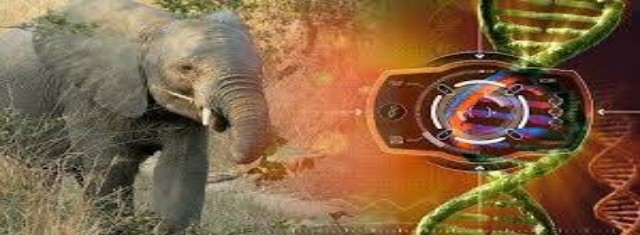Health
The special “²zombie gene“² that protects elephants from cancer
Gene News

Cover of the issue
USPA NEWS -
Researchers have discovered a gene that can protect elephants from cancer.
Because animal cells keep dividing over an organism´s life, and each division carries the risk of producing a cancerous mutation, it should follow that larger animals with longer life spans are at higher risk of developing cancer.
Because animal cells keep dividing over an organism´s life, and each division carries the risk of producing a cancerous mutation, it should follow that larger animals with longer life spans are at higher risk of developing cancer.
Not for elephants, who live for about 70 years, and have about 100 times as many potentially cancerous cells as humans“”die from the disease. however, the researchers found that elephants have 20 copies of p53. This makes their cells significantly more sensitive to damaged DNA and quicker to engage in cellular suicide. Three years ago, researchers began to unravel why.
They knew that humans, like all other animals, have one copy of the master tumor suppressor gene p53. This gene enables humans and elephants to recognize unrepaired DNA damage, a precursor of cancer. Then it causes those damaged cells to die. There are tradeoffs, however. Bigger animals have vastly more cells, and they tend to live longer, which means more time and opportunities to accumulate cancer-causing mutations.
They knew that humans, like all other animals, have one copy of the master tumor suppressor gene p53. This gene enables humans and elephants to recognize unrepaired DNA damage, a precursor of cancer. Then it causes those damaged cells to die. There are tradeoffs, however. Bigger animals have vastly more cells, and they tend to live longer, which means more time and opportunities to accumulate cancer-causing mutations.
When those cells divide, their DNA makes copies of itself. But those copies don´t match the original. Errors get introduced and the repair process can´t catch up.
“Large, long-lived animals must have evolved robust mechanisms to either suppress or eliminate cancerous cells in order to live as long as they do, and reach their adult sizes,“ says study coauthor Juan Manuel Vazquez, a doctoral candidate in the Lynch laboratory.
These huge animals thus have higher odds of developing cancerous cells. This can also happen on a smaller scale. Taller humans, for example, have a slightly higher incidence of several cancer types than average sized people, and shorter people tend to be at a reduced risk for those cancers.
“Large, long-lived animals must have evolved robust mechanisms to either suppress or eliminate cancerous cells in order to live as long as they do, and reach their adult sizes,“ says study coauthor Juan Manuel Vazquez, a doctoral candidate in the Lynch laboratory.
These huge animals thus have higher odds of developing cancerous cells. This can also happen on a smaller scale. Taller humans, for example, have a slightly higher incidence of several cancer types than average sized people, and shorter people tend to be at a reduced risk for those cancers.
LIF6, the study authors suggest, was “reanimated sometime before the demands of maintaining a larger body existed.“ It helped enable the growth of animals that were the size of a 10-pound groundhog into majestic creatures that can weigh more than 15,000 pounds. It was “permissive for the origin of large bodies,“ the authors note, “but not sufficient.“
Exactly how LIF6 induces apoptosis, however, remains unclear. This will be “the focus of continued studies,“ the authors write.
The University of Chicago funded this study through a new lab startup account to Lynch.
Exactly how LIF6 induces apoptosis, however, remains unclear. This will be “the focus of continued studies,“ the authors write.
The University of Chicago funded this study through a new lab startup account to Lynch.
more information: https://https://www.cell.com/cell-reports/fulltext/S2211-1247(18)31145-8
Liability for this article lies with the author, who also holds the copyright. Editorial content from USPA may be quoted on other websites as long as the quote comprises no more than 5% of the entire text, is marked as such and the source is named (via hyperlink).





